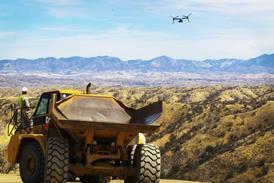GRAHAM WARWICK / WASHINGTON DC
Teledyne Continental Motors is evaluating the market for a 300-400hp (225-300kW) derivative of its prototype Jet-A-fuelled piston engine, developed under NASA's General Aviation Propulsion (GAP) programme.
The company is visiting aircraft manufacturers to determine their interest, but has yet to set a firm schedule for development.
Mobile, Alabama-based Continental questions the market for the 200hp-class Jet-A engine developed under the GAP programme, but says "there is a lot of potential interest in the 300-375hp category". Whereas the prototype has four horizontally opposed cylinders, the larger derivative would have six cylinders, says chief technology officer John Barton.
Flight testing of the Jet-A engine was conducted under the GAP programme, which ended early last year. Since then, development has been on hold because of the downturn in the general aviation market, and Continental's priority on certification of the PowerLink full-authority digital control system for its avgas-fuelled piston engines.
Europe, meanwhile, has moved ahead with development of turbocharged diesel-cycle engines, including the 230hp SMA Engines SRA305-230, and the 135hp Thielert Aero Engines Centurion 1.7 and 310hp Centurion 4.0.
Barton believes Continental's Jet-A engine has advantages over these automotive-based powerplants because it is two-stroke rather than four-stroke. The higher firing frequency results in lower torsional vibration, with the four-cylinder two-stroke engine having the smoothness of an eight-cylinder four-stroke, he says.
Power-to-weight ratio is also higher, Barton says, and the engine turns at a relatively slow 2,200rpm, eliminating the gearbox and allowing use of existing propellers. The resulting engine has a low parts count and manufacturing cost.
Continental is also testing a next-generation engine developed by Honda. The 225hp four-cylinder, liquid-cooled, PowerLink-controlled engine is designed to run on 93-octane unleaded automobile gasoline as well as 100-octane low-lead avgas. It is being flown in the front engine position on the same Cessna 337 used to test the Jet-A engine.
Source: Flight International























